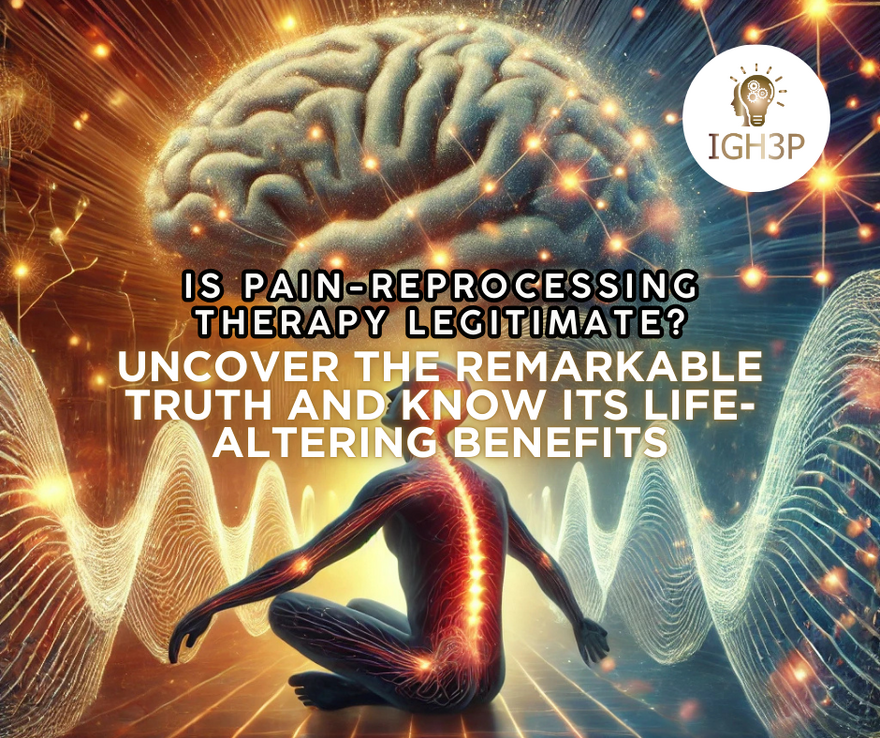Is Pain-Reprocessing Therapy Legitimate? Uncover The Remarkable Truth And Know Its Life-Altering Benefits

Is Pain-Reprocessing Therapy Legitimate?
Uncover the Remarkable Truth and Know Its Life-Altering Benefits
Pain Reprocessing Therapy (PRT) is a relatively new and innovative approach to treating chronic pain that has gained increasing attention and interest in recent years. While more research is needed to fully establish its efficacy and mechanisms of action, there is growing evidence to suggest that PRT is a legitimate and promising treatment option for individuals with chronic pain conditions. 🔍📊
Here are some key points to consider regarding the legitimacy of Pain Reprocessing Therapy:
- Theoretical basis: PRT is grounded in well-established psychological theories and principles, including cognitive-behavioral therapy (CBT), exposure therapy, and mindfulness-based interventions. These approaches have a strong evidence base for treating a range of mental health and chronic pain conditions and provide a coherent framework for understanding and modifying the cognitive, emotional, and behavioural aspects of pain processing.
- Empirical evidence: While research on PRT is still in its early stages, there have been several studies that have demonstrated its potential efficacy for reducing pain intensity, disability, and psychological distress in individuals with behavioural conditions. For example, a random study published in JAMA Psychiatry in 2021 found that PRT was more effective than standard CBT for reducing pain intensity and disability in individuals with chronic back pain. Another study published in the Journal of oral Medicine found that PRT was associated with significant reductions in pain catastrophizing, fear-avoidance beliefs, and depression in individuals with fibromyalgia.
- Expert recommendation: Renowned pain psychology researchers and clinicians, including Dr. Alan Gordon, a clinical psychologist and the head of the Pain Psychology Centre in Los Angeles, have developed and promoted PRT. Dr. Gordon and his colleagues have published several articles and book chapters on the theory and pPRT andce of PRTnd have trained numerous clinicians in this approach. PRT has also been featured in mainstream media outlets such as the New York Times and Psychology Today,and has been endorsed by leading pain experts and s.
- Patient testimonials: While anecdotal evidence should be interpreted with caution, there have been numerous patient testimonials and case studies that have reported significant improvements in pain and functioning following PRT. Many individuals have described PRT as a "life-changing" and "transformative" experience that has helped them to reframe their relationship with pain and engage in meaningful activities despite the presence of pain.
- Integration with other treatments: PRT is not intended to be a standalone treatment for chronic pain but rather a complementary approach that can be integrated with other medical and rehabilitative interventions. PRT can help individuals optimise their engagement with and benefit from other treatments, such as physical therapy, medication management, and lifestyle modifications, by addressing the cognitive, emotional, and behavioural barriers to pain management.
It is important to note that PRT is not a panacea or a one-size-fits-all approach to chronic pain treatment and may not be appropriate or effective for all individuals.
As with any psychological intervention, the effectiveness of PRT may depend on factors such as the individual's readiness for change, the therapeutic alliance with the clinician, and the presence of co-occurring mental health or medical conditions.
However, based on the available evidence and expert consensus, PRT appears to be a legitimate and promising approach to chronic pain management that warrants further research and clinical application.
As with any healthcare decision, individuals considering PRT should discuss its potential benefits and risks with their healthcare provider and make an informed decision based on their individual needs and preferences. 🌟
#PainReprocessingTherapy #ChronicPainTreatment #EvidenceBasedApproach

0 comments
Leave a comment
Please log in or register to post a comment